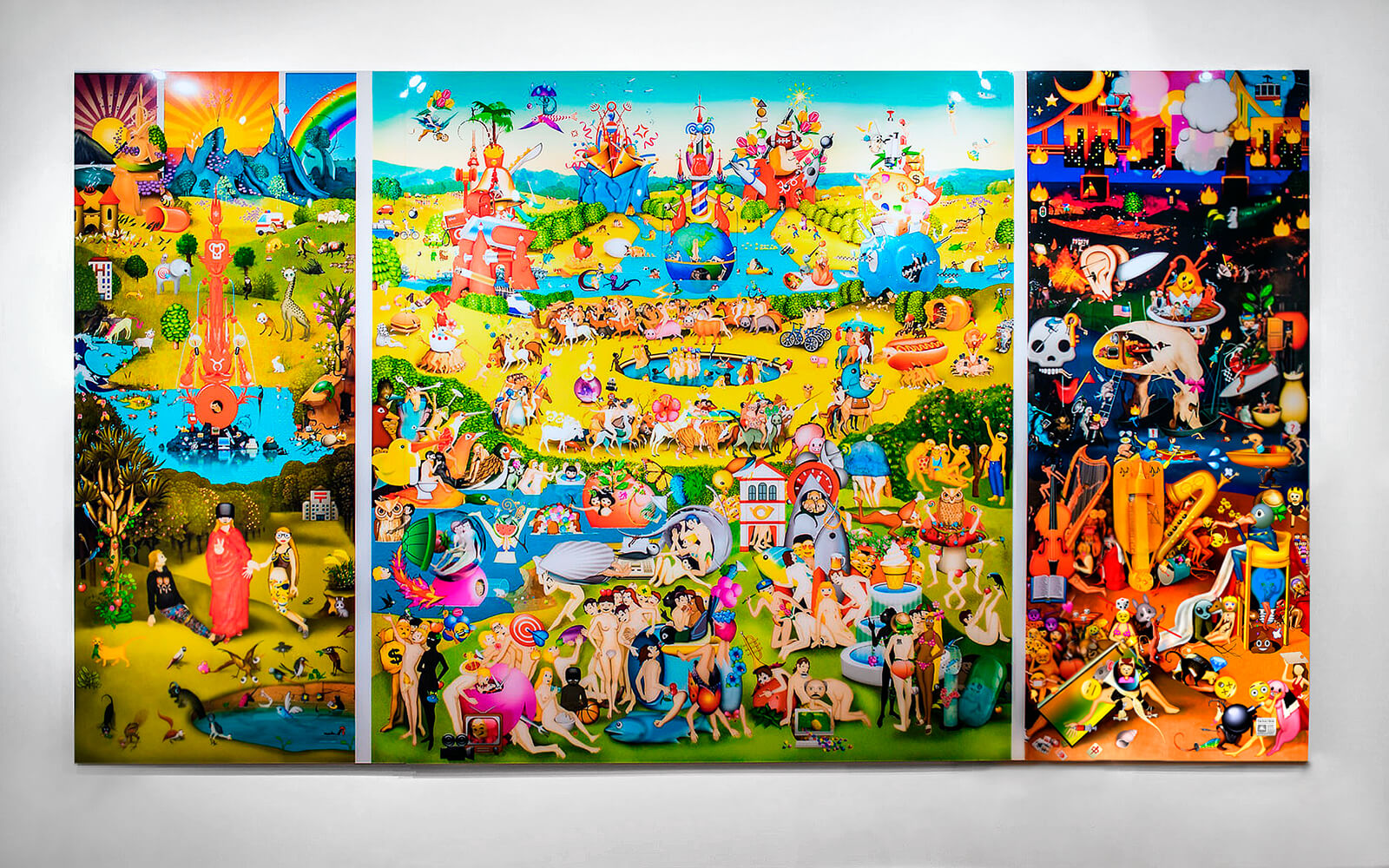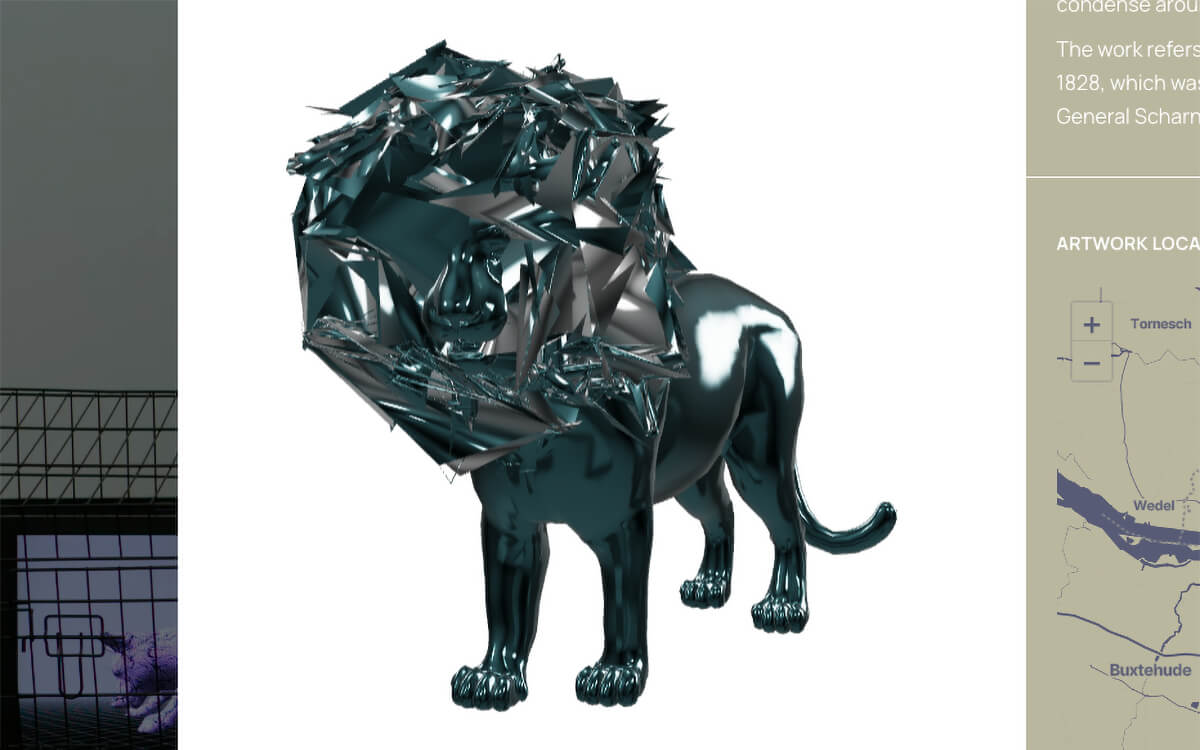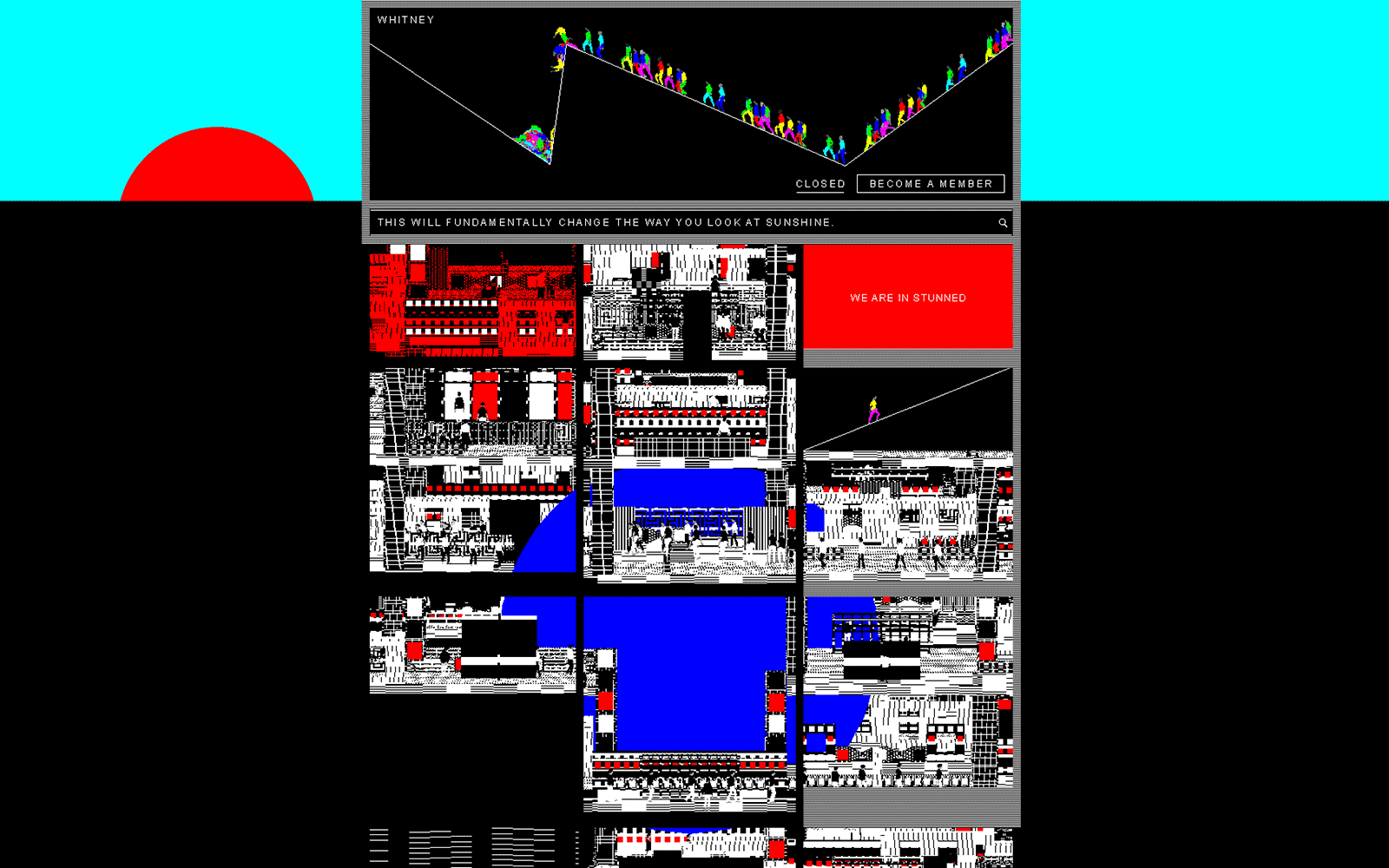1,576 days, 2,409 entries ...
Newsticker, link list, time machine: HOLO.mg/stream logs emerging trajectories in art, science, technology, and culture––every day
“I don’t need to know who the main characters are on social media and what everyone is saying about them, when I can instead spend an hour trying to find a rare sparrow.”
“This is what happens when you deprioritize news on a platform. You don’t actually get less news. You just get more Shrimp Jesuses.”
The TRANSFER Data Trust reports the record-breaking acquisition of Carla Gannis’ digital triptych The Garden of Emoji Delights (2014)—a new high for womxn artists on the Tezos chain. Sold for 32,221 XTZ, or $45,000 USD, the NFT of the internet-age take on Hieronymus Bosch’s iconic 16th-century altarpiece comes with the original, 4 metre-wide print Gannis premiered at her 2014 TRANSFER gallery solo show (image). Instead of biblical immorality, the piece depicts the ‘sins’ of contemporary consumer culture.

“By designing a firehouse of addictive content [and] displacing physical play and in-person socialising, these companies have rewired childhood and changed human development on an almost unimaginable scale.”
“At its best, it tapped into creativity and wit that had lain dormant in the population, showcasing talents that didn’t previously exist because there had been no form or shape for them to take. Live snark became an art.”
“For me, it encapsulates the ways we’ve come round to performing and selling ourselves online. How we’re urged to almost embody capitalism!”
“Creating a single artwork on a small website at this point is a kind of Land Art. To view it you have to leave the urban centers of the feed and go to some off-grid locale. Nobody is coming to visit, but everyone says they want to.”
The “Unleashed” edition of panke.gallery’s recent AR group exhibition, “Animal()City,” pops up at the 37th Chaos Communication Congress (37c3) in Hamburg (DE), releasing CGI creatures by Joachim Blank (image: The restless lion/ess, 2023), Eva Davidova, Meredith Drum, exonemo, Jonas Lund, Sahej Rahal, and Ingeborg Wie Henriksen. The show, curated by panke’s Sakrowski, draws inspiration from the ghostly presence of urban critters that, like people being siloed by online platforms and AI, seem to live in parallel worlds.

“We do not live in a simulation—a streamlined world of products, results, experiences, reviews—but rather on a giant rock whose other life-forms operate according to an ancient, oozing, almost chthonic logic.”
“For every charge that immersive events are diluting our experience of artistry, there’s a counterpoint to be made that it’s opening that experience out to people who might not normally gravitate towards it.”
“In his feud with Zuckerberg, Musk is essentially playing Ric Flair without the charisma.”
“It’s easier to build LK-99 at home than it is to write a good internet regulation.”
“This is an unprecedented escalation by a social media company against independent researchers. Musk has just declared open war. If he succeeds in silencing us other researchers will be next in line.”
Peter Burr’s Sunshine Monument (2023) launches on the Whitney website as part of the museum’s Sunrise/Sunset series of timed micro interventions. Visible for up to 30 seconds twice a day, the “fleeting shimmer” translates the site’s layout into seven abstract architectures—one for each day—bustling with activity. Burr’s harsh signature style channels “the atmosphere of the late Web 2.0 landscape, characterized by an increasingly indexed, optimized, and gamified environment,” writes curator Christiane Paul.

Billed as their largest solo show to date, Eva & Franco Mattes’ “Fake Views” opens at Frankfurter Kunstverein (DE), illuminating platform culture, internet infrastructures, and online communities. For their new installation P2P (2022-23, image), for example, the Italian net art duo invited peers Nora Al-Badri, Simon Denny, Do Not Research, Olia Lialina, Jill Magid, and Jon Rafman to create new works to be hosted on a peer-to-peer server enclosed in a wire cage—an ‘exhibition within the exhibition.’

German media artist and Post-Internet purveyor Aram Bartholl unveals Delusion And Survival (2023), a collection of custom-made steel paper clips in @ sign form. Created in collaboration with The Internet Shop for an upcoming group show at Berlin’s A:D: Curatorial, the whimsical artifact fuses two concepts whose overlapping histories permeate contemporary digital culture—the paper clip that lives on in our interfaces and as a metaphor for AI dystopia, and the now ubiquitous @ sign, first introduced in 1971.

Berlin-based generative artist and prolific Twitch streamer Raphaël de Courville releases a Chrome browser extension that rids Twitter of ‘Chief Twit’ Elon Musk’s latest attempt at humour. “DogeBeGone saves your precious eyes from the scourge of Doge,” writes de Courville about undoing the platform’s sudden logo swap for the Dogecoin mascot dog on April 3 (that may be related to a $258-billion racketeering lawsuit against Musk). Thanks to de Courville’s hack, the bird is back—“just like nature intended.”

“Starting April 15th, only white nationalists with 30 followers will be in ‘For You’ recommendations.”
Berlin-based media artist Aram Bartholl plants a towering heart emoji, or Triangle of Sadness (2023), outside of Stadtgalerie Kiel, Germany, as part of the gallery’s “Tourismus. Let’s do it all” group exhibition. The latest in Bartholl’s series of supersized Internet iconography (Map, 2006-19, This is Fine, 2022) deals with the performative aspects of travel in age of platform capitalism and calls attention to the social cost of algorithmically driven content production and consumption cycles.

Daily discoveries at the nexus of art, science, technology, and culture: Get full access by becoming a HOLO Reader!
- Perspective: research, long-form analysis, and critical commentary
- Encounters: in-depth artist profiles and studio visits of pioneers and key innovators
- Stream: a timeline and news archive with 1,200+ entries and counting
- Edition: HOLO’s annual collector’s edition that captures the calendar year in print
